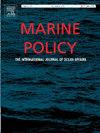Harnessing artificial neural networks for coastal erosion prediction: A systematic review
IF 3.5
2区 社会学
Q2 ENVIRONMENTAL STUDIES
引用次数: 0
Abstract
Artificial Neural Networks (ANNs) have proven highly effective for predicting coastal erosion, surpassing traditional models in capturing complex nonlinear relationships. This systematic review, conducted using the PRISMA protocol, evaluates 40 coastal related studies to assess ANN architectures, input variables, training techniques, and performance metrics. Findings indicate that Multi-Layer Perceptron (MLP) remains the most widely used ANN architecture, while hybrid approaches, including genetic programming and two-step networks, enhance prediction accuracy. Although Long Short-Term Memory (LSTM) and Convolutional Neural Networks (CNNs) have been explored, their applications remain limited. Research is predominantly concentrated in Asia and Europe, underscoring the need for expansion to Africa and South America. Despite advancements, challenges persist, including data scarcity, optimal data combinations, and model interpretability. Most studies focus on short-term predictions, often neglecting long-term coastal changes driven by climate change and sea-level rise. Additionally, ANN performance in predicting storm-induced erosion remains inconsistent, as extreme storm events introduce rapid, nonlinear changes that are difficult to model. Key research gaps include the integration of real-time data sources (e.g., wave, sediment, shoreline profiles, and storm data), improved model transparency, and better consideration of long-term shoreline evolution. Addressing these challenges will enhance ANN-based coastal prediction models, supporting adaptive management, early warning systems, and sustainable erosion mitigation strategies.
利用人工神经网络进行海岸侵蚀预测:系统综述
事实证明,人工神经网络(ANN)在预测海岸侵蚀方面非常有效,在捕捉复杂的非线性 关系方面超过了传统模型。本系统综述采用 PRISMA 协议,对 40 项与沿岸相关的研究进行了评估,以评估人工 神经网络的结构、输入变量、训练技术和性能指标。研究结果表明,多层感知器(MLP)仍然是应用最广泛的 ANN 结构,而包括遗传编程和两步网络在内的混合方法则提高了预测精度。虽然对长短期记忆(LSTM)和卷积神经网络(CNN)进行了探索,但它们的应用仍然有限。研究主要集中在亚洲和欧洲,因此需要向非洲和南美洲扩展。尽管取得了进步,但挑战依然存在,包括数据稀缺、最佳数据组合和模型可解释性。大多数研究侧重于短期预测,往往忽视了气候变化和海平面上升引起的长期沿岸变化。此外,由于极端风暴事件会带来难以建模的快速、非线性变化,因此预测风暴引起的侵蚀的 ANN 性能仍然不稳定。主要的研究缺口包括整合实时数据源(如波浪、沉积物、海岸线剖面和风暴数据)、提高模型透明度以及更好地考虑海岸线的长期演变。应对这些挑战将增强基于 ANN 的海岸预测模式,为适应性管理、预警系统和可持续的侵蚀减缓战略提供支持。
本文章由计算机程序翻译,如有差异,请以英文原文为准。
求助全文
约1分钟内获得全文
求助全文
来源期刊

Marine Policy
Multiple-
CiteScore
7.60
自引率
13.20%
发文量
428
期刊介绍:
Marine Policy is the leading journal of ocean policy studies. It offers researchers, analysts and policy makers a unique combination of analyses in the principal social science disciplines relevant to the formulation of marine policy. Major articles are contributed by specialists in marine affairs, including marine economists and marine resource managers, political scientists, marine scientists, international lawyers, geographers and anthropologists. Drawing on their expertise and research, the journal covers: international, regional and national marine policies; institutional arrangements for the management and regulation of marine activities, including fisheries and shipping; conflict resolution; marine pollution and environment; conservation and use of marine resources. Regular features of Marine Policy include research reports, conference reports and reports on current developments to keep readers up-to-date with the latest developments and research in ocean affairs.
 求助内容:
求助内容: 应助结果提醒方式:
应助结果提醒方式:


